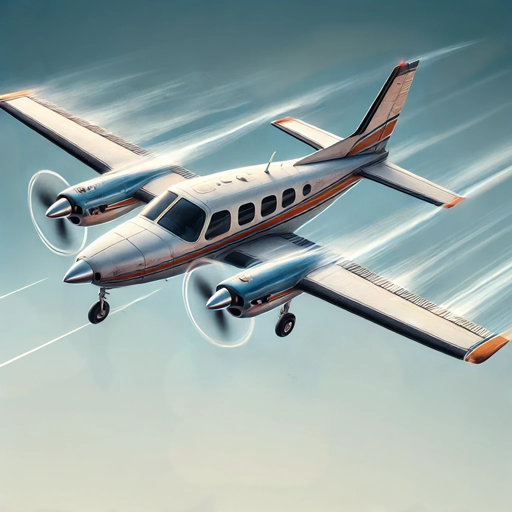Vmc (Minimum Control Speed) is a critical concept in aviation, especially for pilots operating multi-engine aircraft. It refers to the minimum airspeed at which a pilot can maintain directional control of the aircraft with one engine inoperative and the other(s) at maximum takeoff power. This speed is essential for ensuring safety during situations such as engine failure.
Key Characteristics of Vmc:
- Directional Control: At speeds below Vmc, the rudder may not generate sufficient force to counteract the asymmetric thrust caused by the operating engine(s). This could lead to uncontrollable yaw or roll.
- Published Speed: The Vmc speed for a specific aircraft is determined during certification testing and is noted in the Pilot Operating Handbook (POH). It is marked as a red line on the airspeed indicator.
-
Factors Influencing Vmc:
- Engine Power: Vmc increases with higher engine power because the asymmetry in thrust is more pronounced.
- Weight and Balance: A heavier aircraft or a more forward center of gravity tends to lower Vmc due to improved stability and rudder effectiveness.
- Configuration: Configuration factors, such as flaps, landing gear position, and propeller settings, can influence Vmc.
- Altitude: As altitude increases, engine power decreases, typically lowering Vmc. This is because less thrust is available to create an asymmetry.
- Temperature and Density: Higher temperatures and lower air density (e.g., at high altitudes) can reduce thrust, impacting Vmc.
-
Testing Conditions for Certification:
- The critical engine is inoperative.
- The operative engine(s) is at full power.
- Landing gear and flaps are in specific positions.
- The aircraft is at its maximum certificated takeoff weight and aft center of gravity.
Practical Application:
Understanding Vmc is vital for safe aircraft operation. During training, pilots practice engine-out procedures to recognize and manage situations close to Vmc. If an engine fails, the pilot must take immediate actions, including reducing power on the operating engine(s) if necessary, to regain control.
Key Takeaways:
- Flying below Vmc with an engine out is extremely dangerous as it can lead to a loss of control.
- Awareness of Vmc and its contributing factors helps pilots make informed decisions during engine failure scenarios.
- Regular training and familiarity with aircraft-specific Vmc are critical for safe multi-engine operation.

